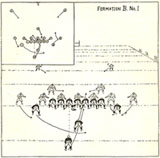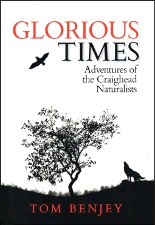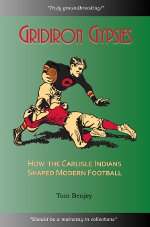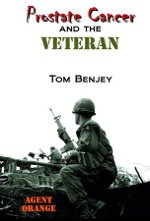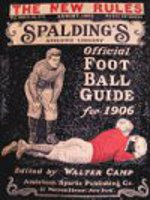Elsewhere in the article mentioned in the previous post,Paul LaRoque, whose nickname was Barrel, discussed the greatest disappointment in his athletic career, the 1906 Carlisle-Vanderbilt game. This game received no mention in the Indian School press or in Steckbeck’s book, possibly because it was added while the team was on a road trip and the Indians played Minnesota five days earlier and Cincinnati two days later, winning both games handily.
He scored two touchdowns against the Commodores but both were called back. Referee for the game was Michigan’s Fielding Yost and he apparently didn’t like the guard-around play that Carlisle ran so successfully. He ruled it illegal even though it was run routinely in the east that year. A century later, high schools occasionally run the guard-around against aggressive defenses. Rather than snap the ball to the quarterback or tailback, the center leaves the ball between his feet as he charges forward. One of the guards pulls back from his position, picks up the ball and runs around the end for a long gain.
Unfortunately, Fielding Yost wasn’t the only obstacle the Indians had to overcome. “We were bitter about that defeat….We had reservations at the biggest hotel in Nashville, but, when we arrived they told us there weren’t enough rooms available and sent us to a small hotel. All the boys on the squad and the team doctor got sick after our evening meal on the eve of the game. We spent most of the night running to the bathroom. We all felt that Vandy was going to win that game one way or another.” The reporter observed that LaRoque was still unable to smile about the experience.

